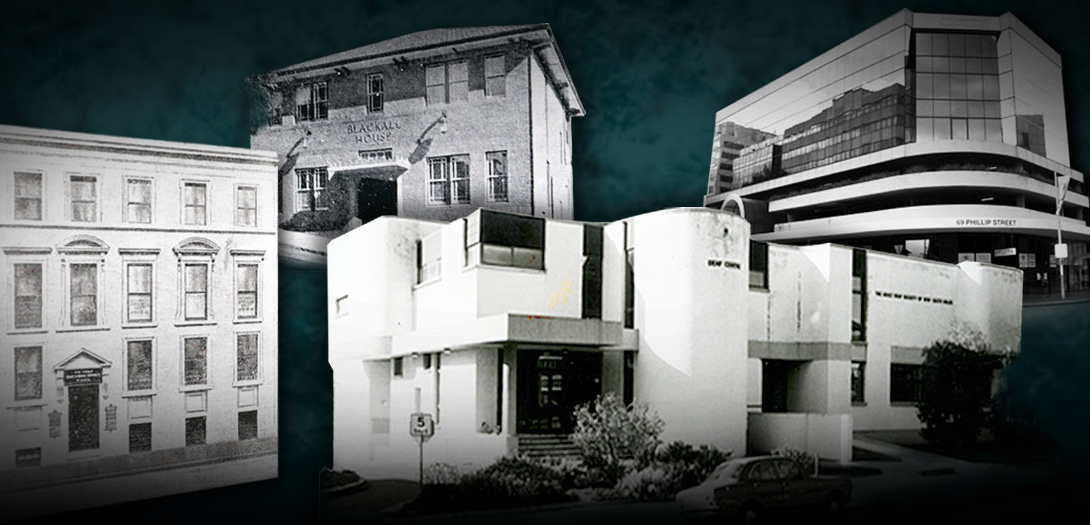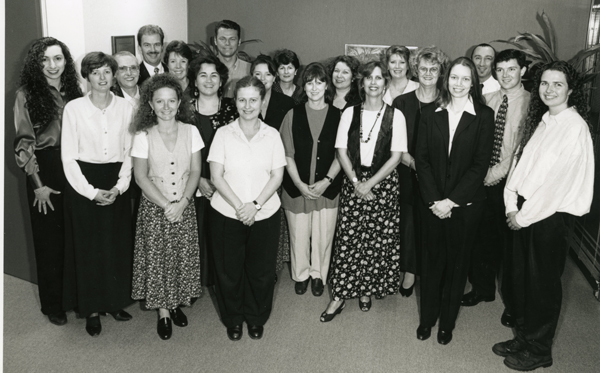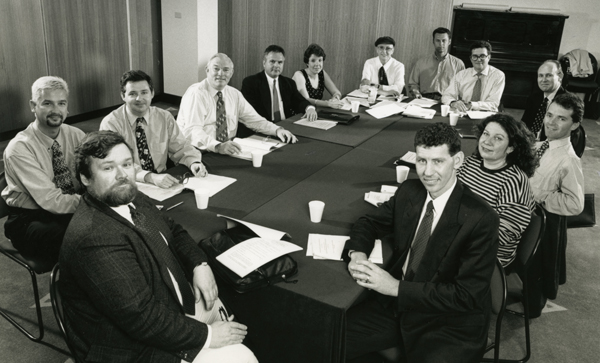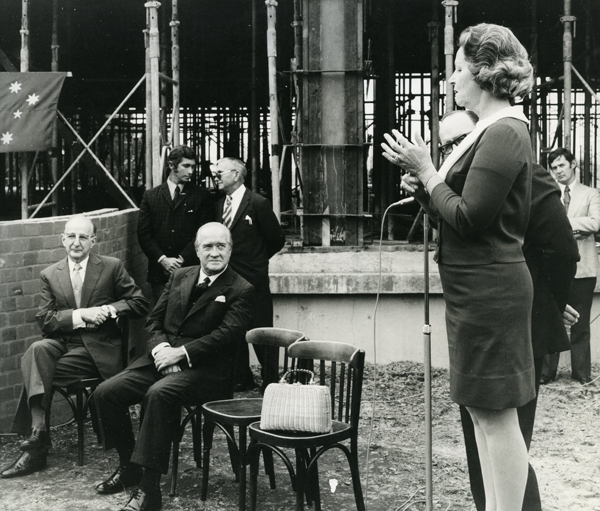
The Deaf Society
The Deaf Society
This section tells you about the Deaf Society of New South Wales - the main organisation for Deaf people in New South Wales since 1913. You can read about its history, see who has served on its Board and staff, and see the different places the Society has occupied.
HISTORY
Established in 1913, the Deaf Society of NSW works towards a vision of "Equity for Deaf People". From its establishment at a meeting in the Sydney Town Hall on 20 October 1913, to its centenary in October 2013, the Deaf Society has sought to serve the Deaf Community of NSW. At times it steered a course towards partnership with that community, and perhaps more frequently travelled with the prevailing winds of patronage. It has become today a bilingual and bicultural community organisation working towards the realisation of the rights of deaf people and the participation of deaf people at every level of society.
The Deaf Society of NSW was established somewhat later than similar organisations in Victoria, Queensland and South Australia. Although adult deaf people had been meeting and receiving assistance for some time in Sydney, this happened under the auspices of the NSW Institute for the Deaf and Dumb and the Blind, with which adult deaf alumni retained a fairly good, although unequal, relationship. With the death of Samuel Watson and his replacement as Superintendent by Harold Earlam, relations became more strained and it became apparent that an organisation for adult deaf people in NSW needed to be established independent of the school. Mr Abraham, the superintendent of the Victorian Deaf and Dumb Society, was invited to Sydney to assist with raising support for the establishment of the society.
The Deaf Society of NSW was established at a meeting in the Sydney Town Hall on 20th October 1913. The Lord Mayor of the time, Arthur Cocks, presided. The motion was made by Peter Forbes and seconded by Fletcher Booth “That this meeting of citizens, being strongly of the opinion that something should be done immediately to ameliorate the lot of the Adult deaf mutes, proposes the formation of an association to be called “The Adult Deaf and Dumb Society of NSW” to take on the spiritual, intellectual, moral and social needs of the afflicted people”. After some initial moving around temporary premises, the Society purchased and settled at 5 Elizabeth St Sydney.
In the turbulent 1920s and 1930s, relations between the hearing administration of the Deaf Society of NSW and the Deaf Community broke down almost completely, and a breakaway group, the NSW Association of Deaf and Dumb Citizens was established in 1929. The Association published The Deaf Advocate, an extraordinary newsletter which became the voice of disaffected deaf people not only in NSW but throughout Australia. The two rival organisations continued until 1937 when, following the Charitable Collections Act of 1934, the state government negotiated a forced merger. The board of the Deaf Society regained control of the resources (and clientele) of both organisations.
In 1970, the Deaf Society of NSW moved from 5 Elizabeth St while the new Deaf Centre at 123 Cambridge St, Stanmore was being built. Completed in 1975, the new centre was large and purpose-built, with a comprehensive range of services on-site, including offices for staff, space for welfare services to operate, spaces for social functions, a bowling green, and adjacent hostel accommodation for elderly deaf people in Lonsdale House. Friday night community gatherings at Stanmore are proverbial in the Deaf Community to this day, representing a sense of space made sacred by community belonging.
The establishment of the Australian Theatre of the Deaf during the 1970s, first as an amateur and later as a professional company, was fostered and supported by one of the boards most forward-thinking directors, the late Kenneth (Ken) Tribe who later wrote to Nola Colefax that he was proud to have been part of the movement “from patronage to partnership, and … to friendship”. Although amateur “concerts” and revues had often been part of the activities of deaf people under the auspices of the Society, ATOD, with its emphasis on the capabilities rather than the needs of deaf people, was a departure from accepted ways of thinking at the time and did not enjoy the unconditional support of all members of the Deaf Society administration.
Significant developments in the early 1980s were the introduction of accreditation testing for interpreters, and the establishment of an Auslan interpreting service separate from the Deaf Society’s welfare services. This move aimed to ensure that deaf people gained greater autonomy and control of their own lives, and represented an inching step away from patronage and towards partnership.
In the late 1980s and early 1990s, the cost of maintaining the large site and comprehensive services in Stanmore led the Deaf Society administration to re-evaluate this model of service provision and to strike out in a new direction. The Deaf Society eschewed the cradle-to-grave model of comprehensive service provision, adopting a model of integration in line with the new multi-cultural ideology of the 1990s. The Stanmore Deaf Centre was sold to Newington College in 1994 and the Deaf Society moved to rented premises at 169 Macquarie St, Parramatta, relocating in 2009 to rented premises at 69 Phillip St, Parramatta.
In 2007, the Deaf Society of NSW merged with Deaf Education Network (formerly the Adult Education Centre for Deaf and Hearing Impaired Persons, Inc.) which was a Registered Training Organisation, and which continues to operate as a department of the Deaf Society of NSW.
The Deaf Society today provides services in Auslan Interpreting, Advocacy and Community Development, Consumer and Community Services and Employment, as well as Education and Training. Its mission is to “work in partnership with the Deaf Community to enhance the quality of life of deaf people, strengthen the community and advocate for changes that will ensure fundamental rights and freedoms.” It has a majority of deaf/hard of hearing board members, with deaf people employed across management and front-line service roles. It is an associate member of the World Federation of the Deaf and a member of the Australian Federation of Deaf Societies.
STAFF
The Deaf Society staff has been through many changes over the past Century. There have been times when Deaf people were welcomed on staff, and times when even the relatives of Deaf people were not allowed to work there. Today the Deaf Society has an almost equal number of Deaf and hearing staff, and prides itself on its ‘Deaf-friendly’ workplace.
BOARD
The Deaf Society board now has a majority of Deaf people, though this has not always been the case. Many leaders in community affairs, business and other fields have donated their time to serve in leading the Deaf Society. Deaf Society presidents have included illustrious public figures such as the late Kenneth Tribe, still remembered for his forward-thinking drive to see Deaf services move from a mindset of patronage to one of partnership.
PLACES
The Deaf Society has had several ‘homes’ throughout its existence. As well as central offices and meeting places, it has also provided a range of hostels and other accommodation for Deaf people during its history.
Protestant Hall
YMCA
Elizabeth House
Gordon-Davis House Hostel
Dey House Hostel
Lonsdale Nursing Home/Lonsdale Hostel
Blackall House/Newcastle Deaf Centre
James Laskie Holiday Home
Parramatta Regional Centre
Wollongong Deaf Centre


